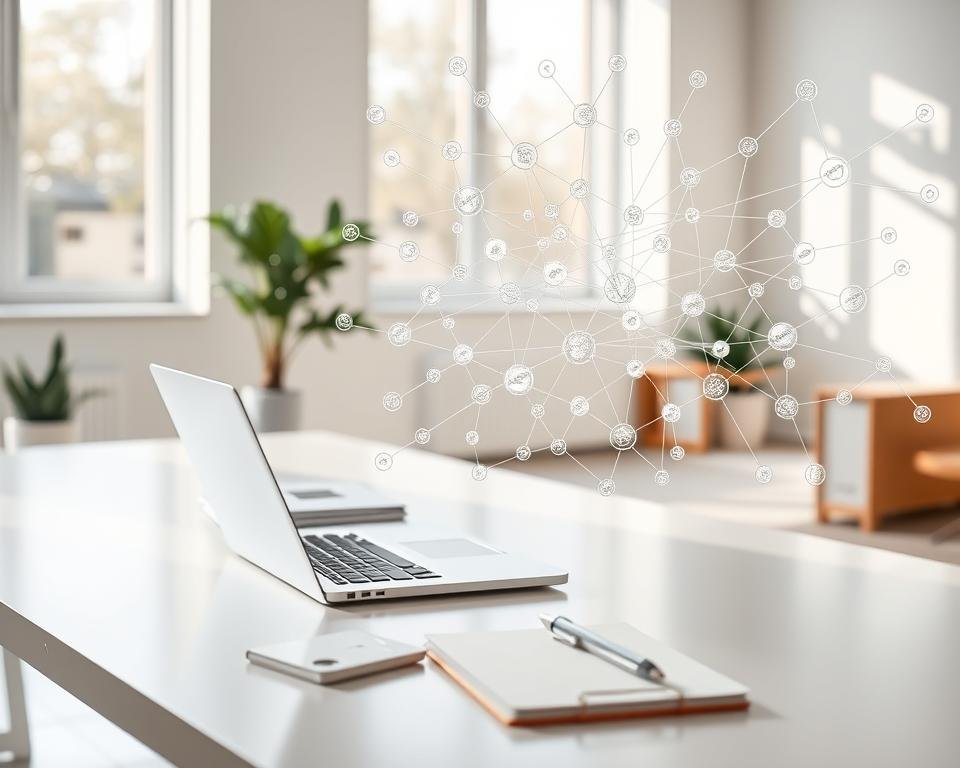I’m here to help you understand the good and bad of internal linking vs. external linking. This knowledge is key to making your website more visible. Knowing the best ways to link is essential for a strong SEO strategy.
A good linking plan can make your site easier to navigate. It also makes your site better for users. In this article, we’ll look at why both linking practices matter. We’ll see how they can help your online presence.
Key Takeaways
- Understand the difference between internal and external linking.
- Learn best practices for implementing a linking strategy.
- Discover how linking can improve your website’s navigation.
- Enhance your SEO strategy with effective linking.
- Boost your website’s visibility with a well-planned linking approach.
What is Internal Linking?
Internal linking is key in SEO. It makes your site easier to use and more credible. It connects one page to another on your site.
Definition of Internal Linking
Internal linking links pages on your site together. It uses anchor text to guide users to more content. Effective internal linking makes your site easy to navigate.
Importance in SEO
Internal linking is very important for SEO. It helps search engines like Google understand your site better. By linking to other pages, you spread out link value and boost your site’s authority.
Impact on User Experience
Internal linking greatly affects how users experience your site. It guides visitors to more content, keeping them engaged. A good internal linking plan makes your site easy to explore.
Knowing how to use internal linking well can boost your site’s SEO and user experience. It’s a vital part of any good SEO plan.
What is External Linking?
External linking is key to a good SEO strategy. It makes your site more trustworthy. By linking to other sites, you add credibility and value to your content.

Definition of External Linking
External linking means linking to sites outside your own. This includes linking to reputable sites, sources, or references that back up your content.
Linking to external sources shows you trust them. This builds trust with your users and makes their visit better.
Importance in SEO
External linking boosts your site’s credibility and trustworthiness in SEO. By linking to quality sources, you show search engines your content is well-researched and relevant.
It also spreads link juice and improves the web’s linking structure. This can help your site rank better in search engines.
Types of External Links
There are many types of external links you can use. These include:
- Links to authoritative sources: These are links to reputable sites that support your content and add credibility.
- Links to relevant content: These are links to other relevant content on the web that adds value to your users.
- Links to external resources: These are links to external tools or references that support your content.
Using a mix of these types of external links can make your website more credible and trustworthy.
Benefits of Internal Linking
Internal linking makes your site easier to navigate and more visible. It’s a key tool for better user experience and SEO.
A good internal linking plan can change your site a lot. It makes your content easy to find for users and search engines. This leads to many benefits.
Improved Site Navigation
Internal linking makes your site easier to navigate. It creates a clear path for users to find more content. This makes their visit better and keeps them interested.
Effective internal linking means linking to content that’s useful and adds value. Use clear anchor text to tell users what they’ll find.
Enhanced Page Authority
Internal linking also boosts page authority. It spreads link equity, making your pages rank better. Search engines see these pages as more trustworthy.
Link to quality content to improve page authority. This makes your site’s content network stronger and more connected.
Increased Page Views
Internal linking can also increase page views. It guides users to more content, making them explore more. This boosts user experience and page views.
Use internal linking wisely to get more views. Place links where they make sense and use descriptive anchor text. Keep links few to avoid overwhelming users.
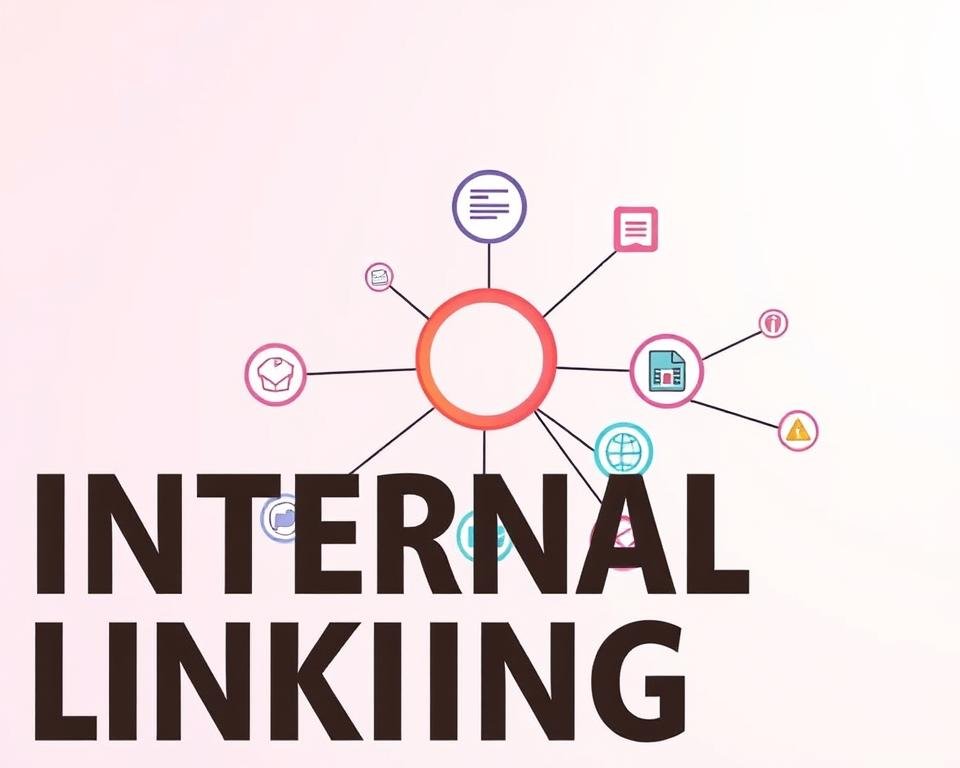
In summary, internal linking offers many benefits. It improves navigation, authority, and views. It’s a key part of a good SEO strategy.
Benefits of External Linking
External linking is more than just references. It builds a strong online presence. By linking to quality sites, you boost your site’s credibility and give users a better experience.
Credibility and Trustworthiness
External linking boosts your site’s credibility and trust. Linking to trusted sources shows you care about accurate info. This builds trust with your audience.
Credibility grows with credible sources. For example, links to government or educational sites make your content more reliable. This helps your users and makes your site more authoritative.
| Source Type | Credibility Impact | User Trust |
|---|---|---|
| Government Websites | High | Increases |
| Educational Websites | High | Increases |
| Commercial Websites | Variable | Depends on reputation |
Networking Opportunities
External linking also creates networking chances. By linking to relevant content, you can connect with other creators. This might lead to collaborations or backlinks.
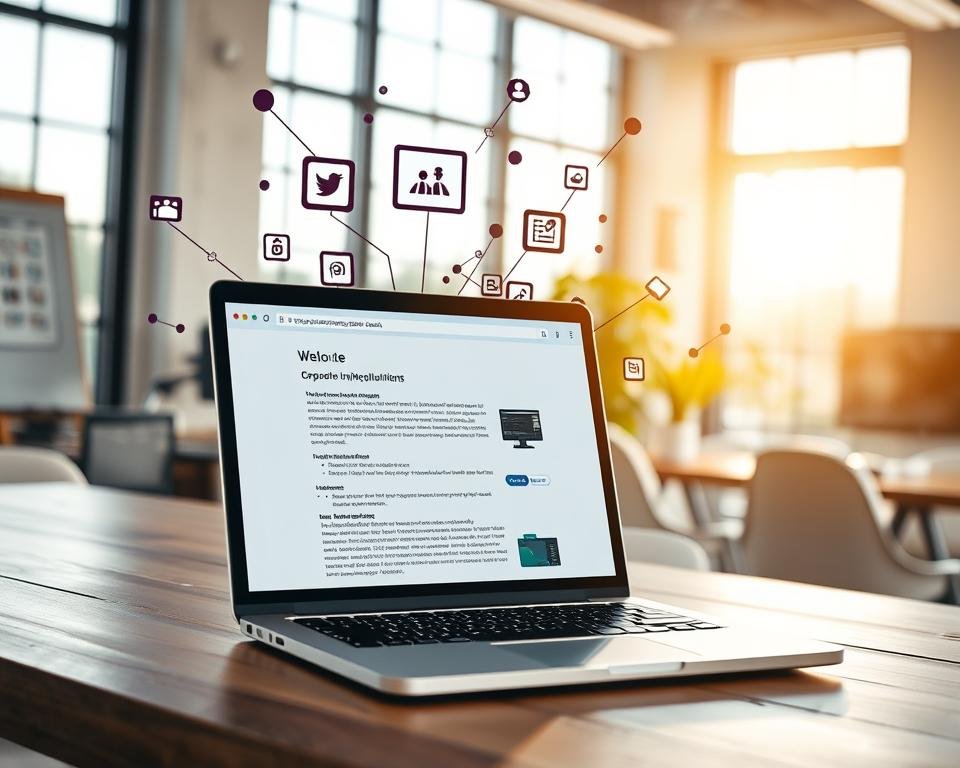
Providing Value to Users
One big plus of external linking is the value it adds to users. By linking to more resources, you give users a deeper understanding. This improves their experience and can increase engagement.
For instance, links to detailed guides or studies offer more insights. This makes your content more valuable and informative.
- Enhances user experience
- Provides additional resources
- Increases content value
Best Practices for Internal Linking
Using best practices for internal linking can make your website easier to navigate. It also helps your website rank better in search engines. Follow these tips to make your site more user-friendly and SEO-friendly.
Use Descriptive Anchor Text
Descriptive anchor text is key for good internal linking. Don’t use “click here” or similar. Instead, use text that tells users what they’ll find. For example, “Learn more about our SEO services” is better than “click here.”
This makes your site easier to use and helps search engines understand your pages better.
Link to Relevant Content
Linking to relevant content is another best practice. It connects users to other pages that match what they’re reading. This improves their experience, boosts page views, and helps search engines see your site’s structure.
For example, if you’re sharing SEO tips, link to an article about keyword research. It’s all about connecting the dots for your users.
Limit the Number of Links
It’s important not to overdo it with links. Too many can confuse users and make each link less important. Stick to links that are truly useful and relevant.
Try to find a balance. You want enough links to help, but not so many they get in the way.

By following these best practices, you can make your internal linking better. It will help both your users and search engines. Just remember to be clear, relevant, and not too many links.
Best Practices for External Linking
To get the most out of external linking, follow some key steps. It’s a big part of SEO that boosts your site’s trust and how users feel about it.
Relevance and Quality
It’s very important to pick relevant and quality external links. Links to trusted sources make your content better and more believable. Think about whether the links you choose add something new and useful to your content.
Using ‘nofollow’ Tags Wisely
The ‘nofollow’ tag is a big help in linking. It tells search engines not to follow the link, keeping your site safe from bad sources. Use it for links to things like user content, spam, or ads to keep your site clean.
Avoiding Overlinking
Even though links are good, too many can hurt your site. Too many links can confuse readers and make your content less important. Only use links to the most important and useful sources. This makes your content better.
By following these tips, you can make your site better with external linking. It will help your SEO, make your site more trustworthy, and improve how users feel about it.
Internal Linking Tools and Strategies
Improving your website’s SEO starts with better internal linking. I’ll share tools and strategies to help. Good internal linking makes your site easier to use and helps search engines understand it better.
Tools for Building Internal Links
Many tools can find chances to link your site’s pages together. Here are some top ones:
- Ahrefs: Gives a detailed look at your linking structure.
- SEMrush: Shows how your linking is doing and how to make it better.
- Moz: Finds and fixes any linking problems.
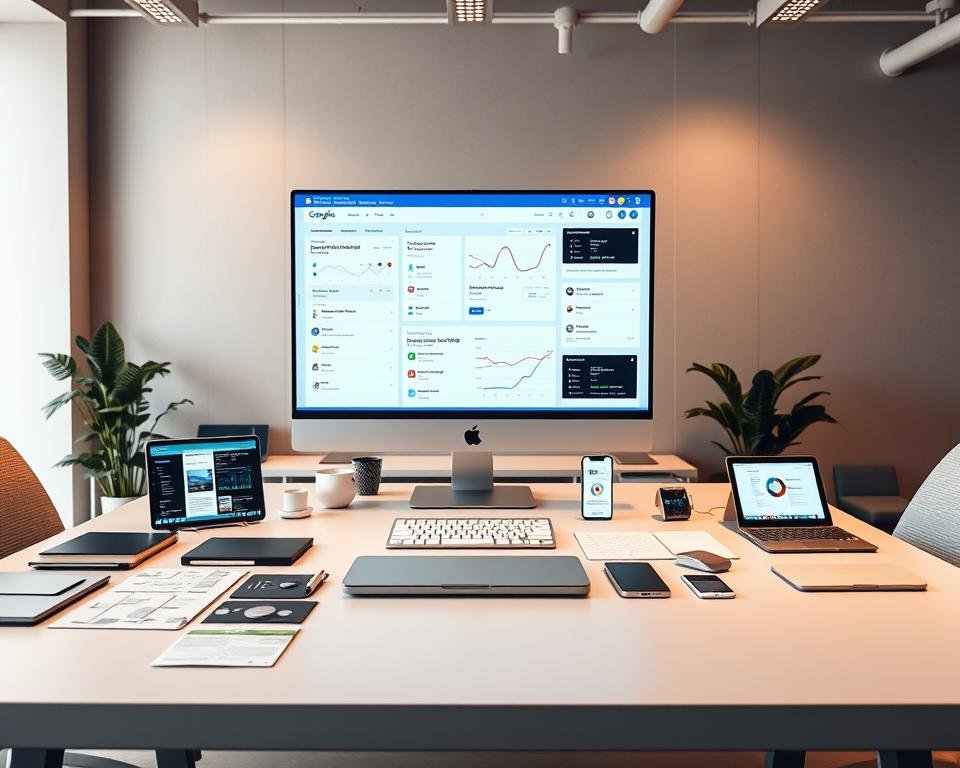
Content Mapping Techniques
Content mapping is key to a good linking strategy. It lets you see your content’s structure to find linking chances. Here are ways to map your content:
| Technique | Description | Benefits |
|---|---|---|
| Cluster Analysis | Groups related content together | Improves user experience, boosts SEO |
| Content Inventory | Makes a list of all your content | Finds linking chances, cuts down on duplicates |
| Visual Mapping | Makes a visual of your content structure | Makes finding links easier, improves site navigation |
Monitoring Internal Link Performance
It’s important to watch how your internal links are doing. Use Google Analytics to see how they’re working. This helps you find ways to get better.
By keeping an eye on your links, you can make your site’s SEO even better over time.
External Linking Tools and Strategies
Having the right tools and strategies for external linking is key. It boosts your website’s credibility and gives users more valuable resources.
Tools for Finding Quality Sources
Finding good sources is vital for a strong external linking plan. Ahrefs and Moz help find websites that match your content well. They check if the sites are trustworthy and useful.
- Ahrefs: Offers a big database of backlinks and referring domains.
- Moz: Gives insights into domain and page authority.
- Google Scholar: Great for academic and research content.
Analyzing Competitor Links
Looking at your competitors’ links can be very helpful. It shows where they link out, helping you find places for your content. SEMrush and Ahrefs have tools for this.
- Find your main competitors in your niche.
- Use tools to see where they link out.
- Then, reach out to those sources for your content.
Tracking Link Performance
It’s important to track how your external links do. Google Analytics helps see how users interact with them. This lets you make your links better for your users.

Using these tools and strategies can make your external linking better. It boosts your website’s credibility and gives more value to your users. Always check and update your linking strategy to keep it working well.
Common Mistakes in Linking
Exploring linking, I found some big mistakes that hurt your online look. Linking is key in SEO. Staying away from these errors keeps your online image strong.
Overusing Keywords in Anchor Text
One big mistake is using too many keywords in anchor text. Search engines see this as trying to cheat. It’s better to use varied, descriptive anchor text that tells what the link is about.
Using the same keyword-rich anchor text over and over is bad. It’s important to mix up your anchor text to avoid penalties and keep your links natural.
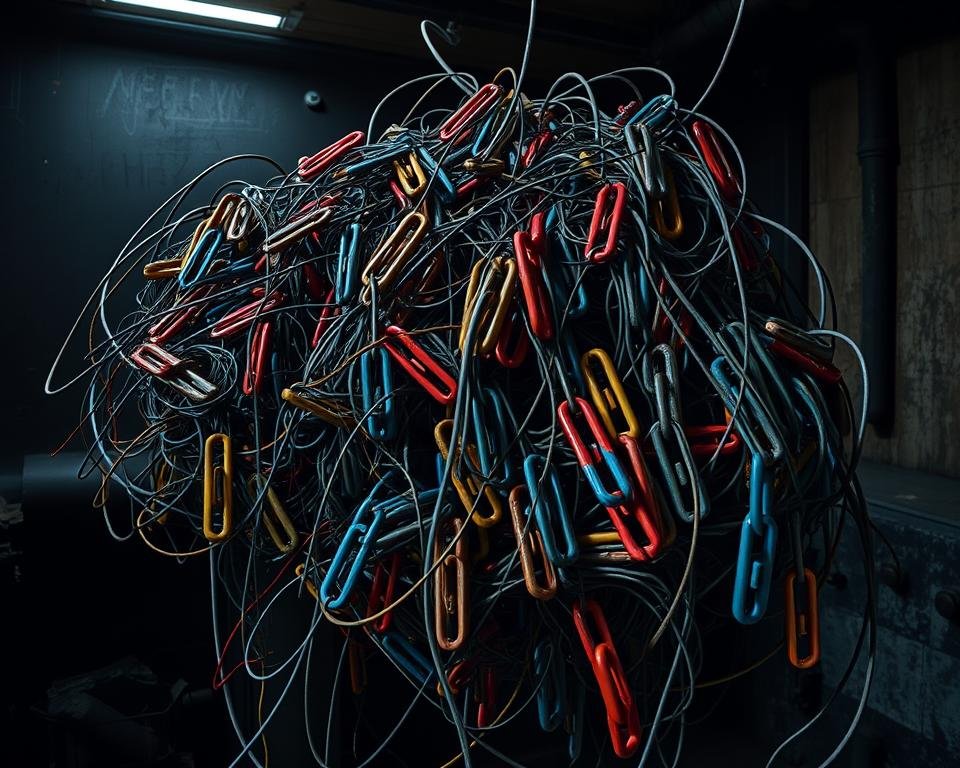
Ignoring Link Updates
Another mistake is not keeping links updated. Broken links hurt user experience and search rankings. Keeping links current is key for a good user experience.
Doing regular link checks helps find and fix broken links. This keeps your linking plan strong.
Focusing Only on One Type of Linking
Only using one type of link, like internal or external, limits your SEO. A mix of both is best. It gives value to users and search engines.
- A good linking plan has both internal and external links.
- Internal links help with site navigation and page authority.
- External links add credibility and more resources for users.
Avoiding these mistakes helps build a strong linking strategy. This boosts your online presence.
Conclusion: Finding the Balance in Linking
A good linking strategy is key for SEO success. It mixes internal and external links. This boosts your site’s visibility, trust, and user experience.
A Diverse Strategy for Optimal Results
Using both internal and external links is smart. It makes your SEO plan strong. Internal links help users find more on your site. External links add credibility and value.
Implementing Best Practices
To get a good linking balance, follow best practices. Use clear anchor text and link to the right content. Make sure external links are high quality. These steps help your SEO and improve your site.
